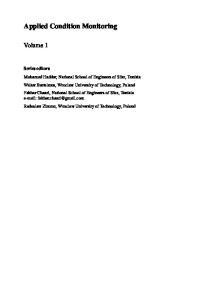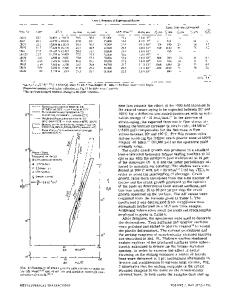Fatigue crack growth in micro-machined single-crystal silicon
- PDF / 838,863 Bytes
- 6 Pages / 612 x 792 pts (letter) Page_size
- 17 Downloads / 461 Views
Alissa M. Fitzgeralda) Department of Aeronautics and Astronautics, Stanford University, Stanford, California 94305
Thomas W. Kenny Department of Mechanical Engineering, Stanford University, Stanford, California 94305
Reinhold H. Dauskardtb) Department of Materials Science and Engineering, Stanford University, Stanford, California 94305 (Received 13 January 2004; accepted 19 May 2004)
Although crystalline silicon is not generally considered susceptible to fatigue crack growth, recent studies suggest that there may be fatigue processes in silicon micro-machined structures. In the present study, a micro-machined fracture specimen geometry was used to examine stable crack growth under fatigue loading. Crack length and loads were carefully monitored throughout the test to distinguish between environmentally assisted crack growth (stress corrosion) and mechanically induced fatigue-crack growth. Results revealed similar steplike crack extension versus time for the cyclic and monotonic tests. The fatigue crack-growth curve extracted from the crack extension data exhibited a nearly vertical slope with no evidence of accelerated crack-growth rates. Fracture surfaces for the monotonic and cyclic tests were similar, further suggesting that a true mechanical fatigue crack-growth mechanism did not occur. Explanations for the observed lack of fatigue crack growth are presented and discussed with respect to reported stress-life behavior.
I. INTRODUCTION
Microelectromechanical systems (MEMS) form a growing range of devices, including micromirrors for digital displays, airbag accelerometers, and miniature blood pressure monitors that may experience significant cyclic mechanical or vibrational loading during service. Silicon is commonly used as the principal material for MEMS devices because it is easy to manufacture using well-established microelectronic lithographic processing techniques. In addition, silicon has excellent strength properties similar to those of high strength steel, with a fracture strength of 1–2 GPa and elastic modulus of 170 GPa.1 While the fracture toughness of silicon is significantly lower than that of comparable strength metallic materials, silicon is not generally considered susceptible to fatigue damage, which is of considerable importance for MEMS devices that are frequently exposed to significant fatigue and vibrational loading.
a)
Present address: A.M. Fitzgerald & Associates, 655 Skyway Rd. Suite 118, San Carlos, CA 94070. b) Address all correspondence to this author. e-mail: [email protected] DOI: 10.1557/JMR.2004.0343 J. Mater. Res., Vol. 19, No. 9, Sep 2004
http://journals.cambridge.org
Downloaded: 14 Mar 2015
Silicon exhibits nearly perfectly brittle fracture behavior at room temperature, showing very little crack tip plasticity due to low dislocation mobility and density.2 Therefore, it has been the general perception that singlecrystal silicon will not fatigue by typical metal-like fatigue mechanisms. It is possible, however, that other mechanisms may lead to fatigue damage in sili
Data Loading...









